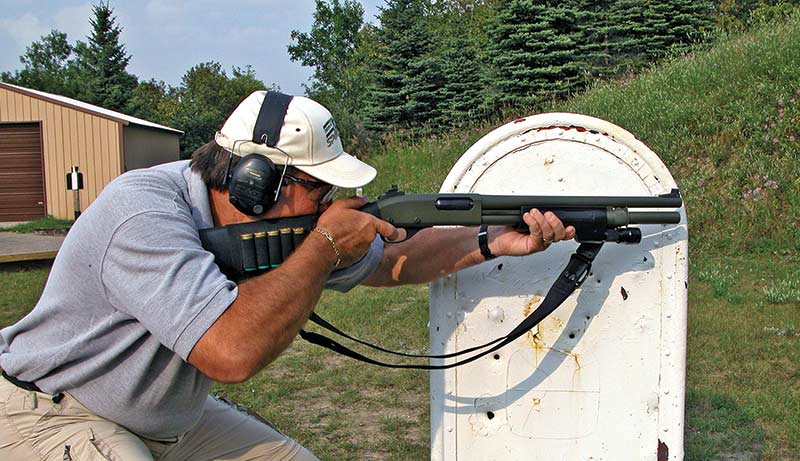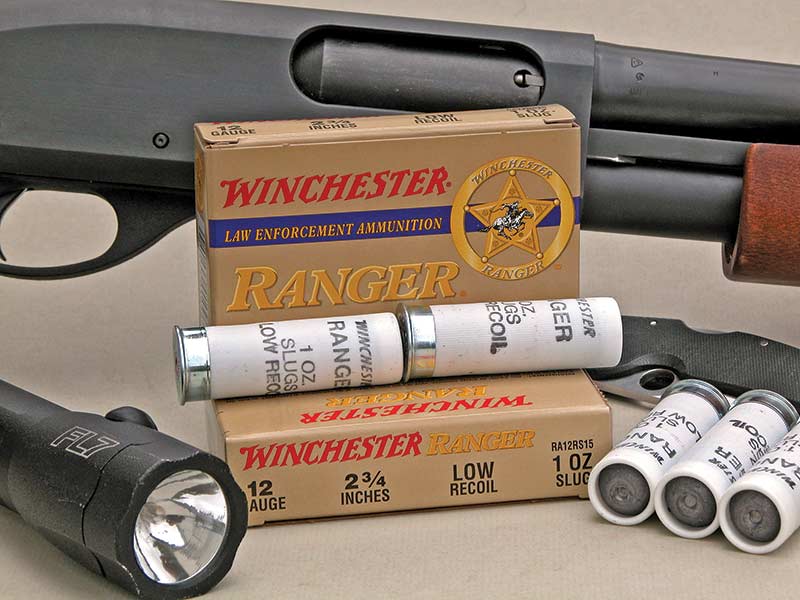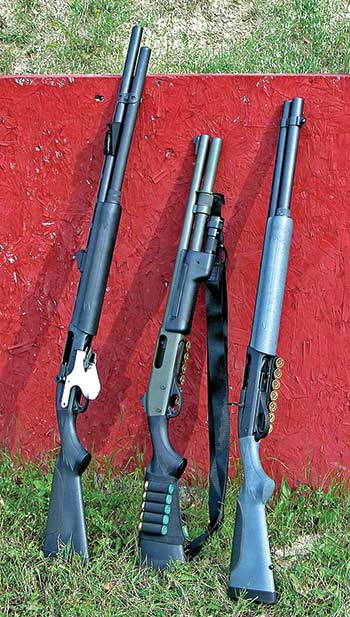11
The Combat Shotgun
The good right arm of law enforcement
The foremost virtue of the combat shotgun is decisive stopping power. Nothing is 100 percent and, for all its virtues, the shotgun isn’t perfect. It kicks, especially with magnum buckshot or rifled slug loads. The recoil is more than many people can handle and requires a certain amount of size, weight, strength and experience.
I work with police on a fairly regular basis. I’ve asked recruits what part of their training is most unpleasant. Usually it is getting zapped with pepper spray and qualifying with the shotgun. Many recruits have never touched a firearm until they’ve started police training. They don’t practice with the shotgun any more than absolutely necessary to qualify, and such unfamiliarity leads to accidents.
In one case, an officer chambered a round while backing-up her partner during an arrest. After the suspect was in custody, she fumbled with the action, trying to clear the chamber before. The gun fired. A bystander on the other side of the street caught a pellet and lost an eye as a result.
The pattern of a shotgun is sometimes sold as a virtue with platitudes like “Just point it in the general direction and you’re bound to hit the bad guy.” It can also be a flaw. The shotgun loaded with buckshot puts a lot of projectiles in the air with every shot.
An officer responding to a domestic disturbance call was confronted by a woman at the door, some 18 yards away, armed with a high powered rifle. The officer took cover behind his vehicle, retrieving the shotgun from its rack and ordered the woman to put the rifle down. She fired at the officer and missed. As she reloaded for a second shot, the officer aimed center of mass and fired a fatal blast from the 12 gauge. Unquestionably the officer was justified in using deadly force. But behind the woman in the darkened room, invisible to the officer, was her six-year-old son. Two pellets from the spreading pattern struck and killed him.
Recoil and liability concerns have led many departments to rethink the role of the shotgun. Some have adopted the .223 or pistol-caliber carbines, either as replacements or in addition to the shotgun. Others are adopting new and better shotgun loads. The new low-recoil loads have solved most of our concerns with the shotgun.”
Federal, Remington and Winchester have done a terrific job in developing better loads. These low-recoil rounds kick less, increasing shooter
confidence and improving qualification scores. And with better technology they are actually more effective.
An armorer for a large police service commented, “With our old buckshot loads, on a 25-yard silhouette target, we might get only half the pellets hitting paper. With the new stuff we’ve had shotguns put all nine pellets into the head of the target at 25 yards.”
Full-power buckshot and slug loads are intended for big-game hunting. Ranges typically start at 25 yards, out to 100 yards or more with slugs. The combat shotgun is most often used at pistol ranges, often measured in feet rather than yards. The high velocity generated by hunting loads really isn’t needed.
According to the armorer, “The low-recoil ammunition isn’t just for practice. Our officers can select either buckshot or slugs, but only low recoil loads are authorized.”
This department believes low-recoil ammunition has enhanced the utility of the combat shotgun. Officers practice more, flinch less, shoot better and have more confidence. Greater accuracy and tighter patterns improve both officer and public safety.
Recent developments in recoil pads shouldn’t be overlooked. Competitive superstar Jerry Miculek called the Remington R3 recoil pad on his competition shotgun, “The best shooting accessory you can buy.” It is amazingly effective.
With better recoil pads and improved loads, the combat shotgun should do an even better job of guarding those who protect and serve.
For more information:
Federal Cartridge
Co., (800) 322-2342, www.federalcartridge.com
JP Enterprises, (651) 426-9196
www.jprifles.com
Remington Arms, (800)
243-9700, www.remington.com
Winchester Ammunition, (618) 258-2000
www.winchester.com
Wilson Combat, (870) 545-3618
www.wilsoncombat.com





